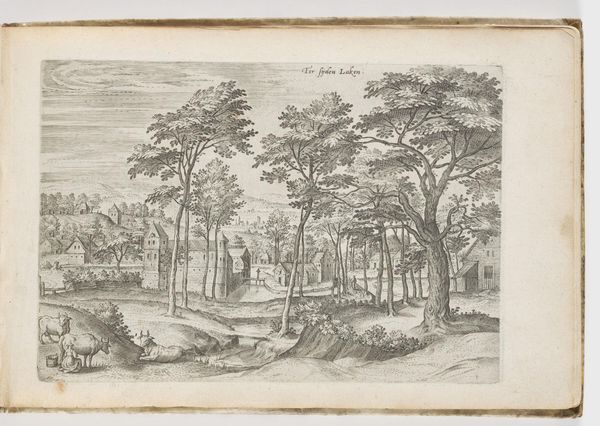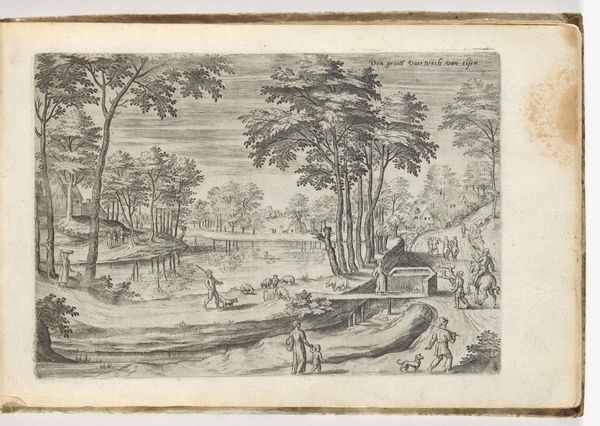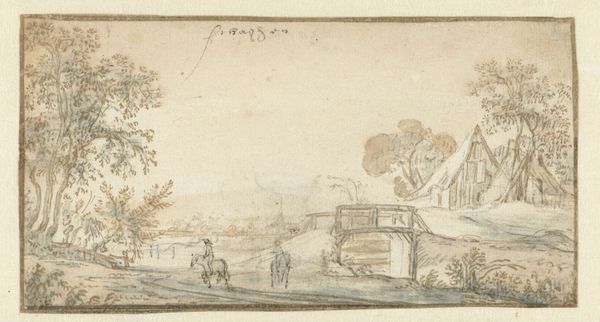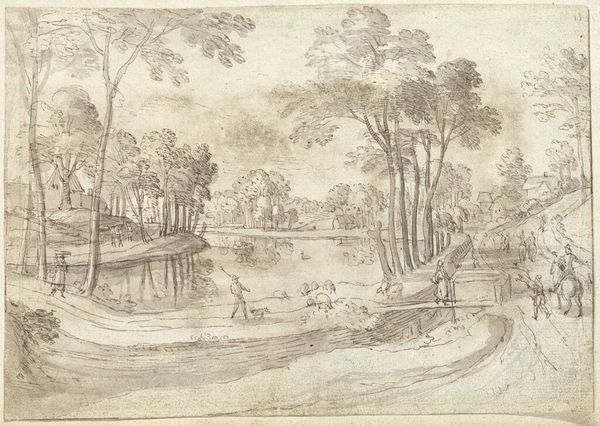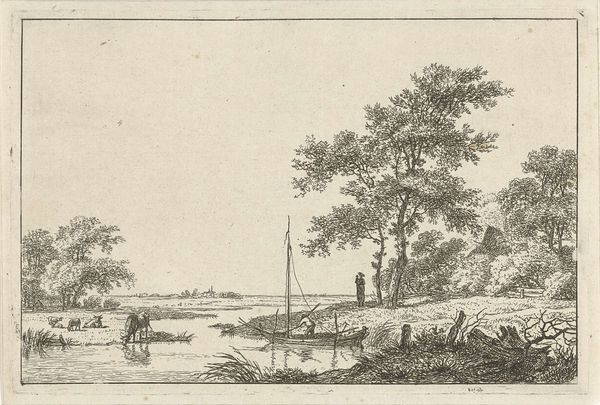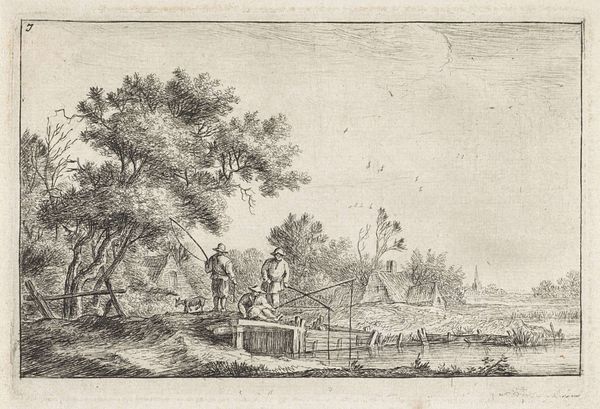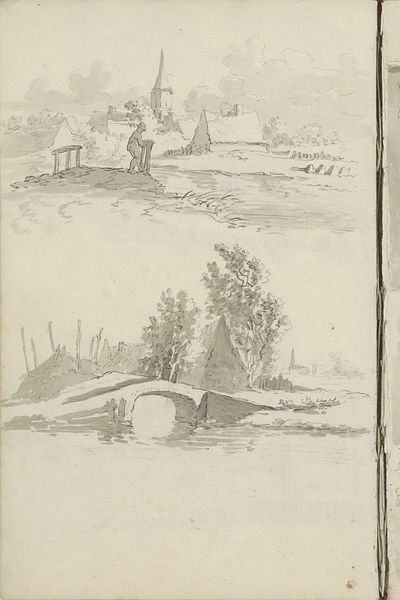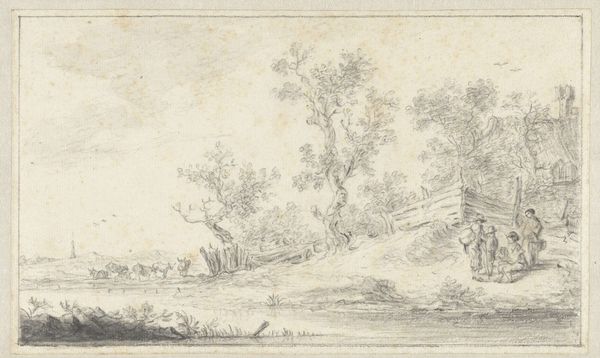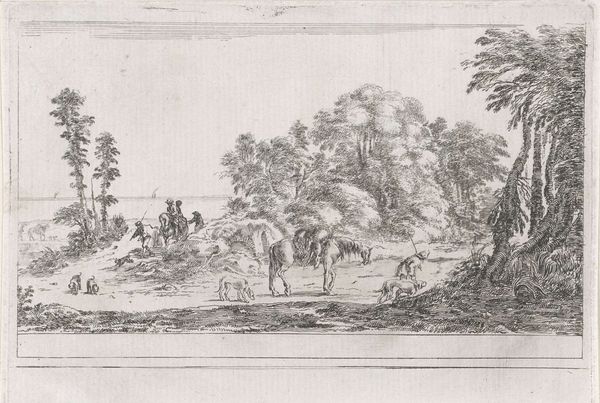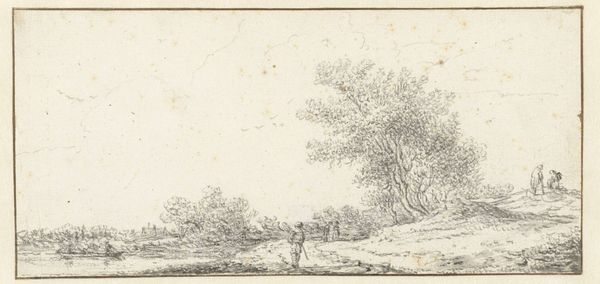
drawing, ink, pencil, pen
#
drawing
#
pen sketch
#
pencil sketch
#
landscape
#
ink
#
ink drawing experimentation
#
pencil
#
pen work
#
sketchbook drawing
#
pen
#
sketchbook art
#
realism
Copyright: Rijks Museum: Open Domain
Curator: Looking at this sketchbook page, I see immediately a sense of openness, of peaceful communion with nature. Editor: Indeed, a tranquil Dutch pastoral scene, evoking the slow rhythms of agrarian life. What we have here are two landscape studies by Barend Hendrik Thier, likely dating from around 1780 to 1800. Thier captures scenes from Landschappen met vee en molen ("Landscapes with Cattle and Mill"). Curator: Yes, and the cattle are especially interesting. See how they are integrated seamlessly, dwarfed by the immense open sky and distant architectural element in the top sketch. They almost represent a lost world, of interdependence and simpler needs. The landscapes almost represent idealizations of rustic life, a common theme during the Romantic era. Editor: Exactly. The scenes are rendered primarily in pencil and ink, demonstrating a delicacy. The sketch is evocative, less a detailed picture and more an expressionistic mood. We are prompted to envision an idyllic vision of what life once was. The placement within a sketchbook makes this page deeply personal as though we’re viewing a page from a traveler’s journal. The fence and windmills depicted also seem to highlight ideas about progress, technology, land division and ownership at a critical point in Dutch history. Curator: Notice also how he contrasts the foreground elements - the fences, the banks - with the ethereal treatment of the backgrounds. They are almost separate planes, suggesting, perhaps, an artistic exploration of perspective or the human perception of space. These images reveal our universal, deeply ingrained longing for a serene, symbiotic relationship with nature. Even the lack of strong colour adds to the timeless feeling of looking at these studies. Editor: Absolutely. This feels especially pertinent today, when questions around industrial development and nature have intensified within debates on sustainability and ecology. To depict landscapes like these at this historical juncture could reflect a subtle desire for simpler times, critiquing some facets of burgeoning modernization. The artwork seems like an intimate portal connecting us to debates on tradition, industrialisation, and what constitutes authentic culture. Curator: Ultimately, viewing Thier's sketches through a contemporary lens reminds us that art's relevance often lies in its capacity to speak across centuries, sparking fresh perspectives and prompting vital conversations about the past, present, and the future we collectively want to shape. Editor: And what better prompt for critical self-reflection than a tranquil landscape viewed as we stroll through an exhibition space.
Comments
No comments
Be the first to comment and join the conversation on the ultimate creative platform.
